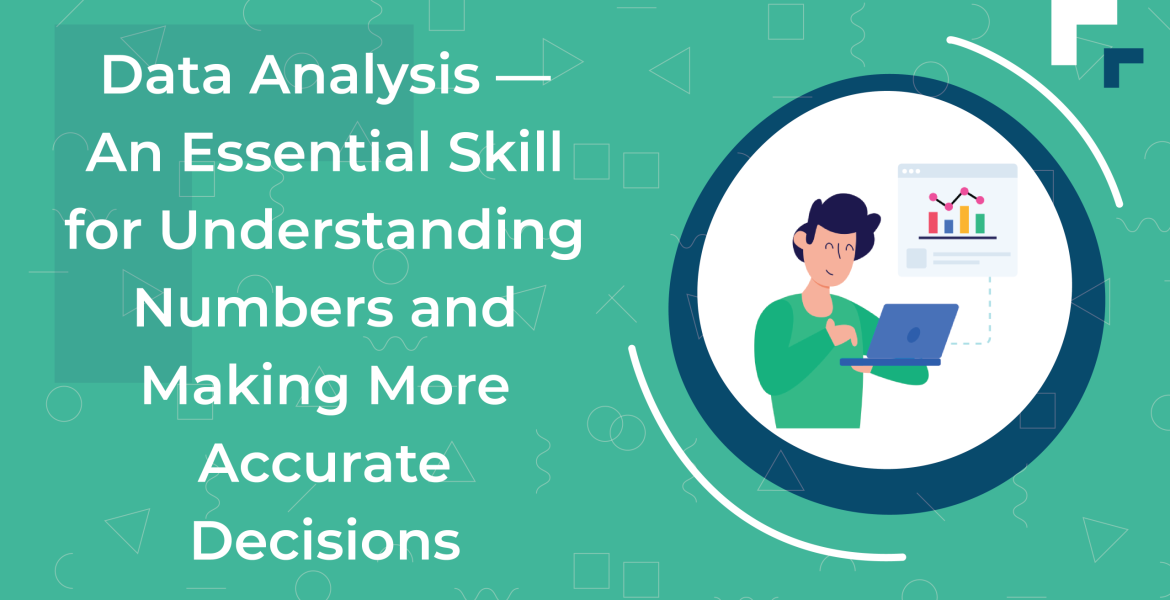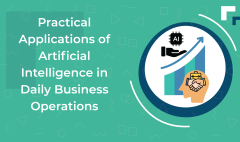Data Analysis — An Essential Skill for Understanding Numbers and Making More Accurate Decisions

Data Analysis — An Essential Skill for Understanding Numbers and Making More Accurate Decisions
Introduction
In a world where information and data are growing at an unprecedented rate, success in management or business no longer relies solely on intuition or experience. It now depends on data analysis and the ability to understand numbers.
Today’s organizations are not just looking for people who can collect data, they want those who can turn it into clear insights and precise decisions.
Data analysis is no longer limited to statisticians or tech experts; it has become an essential skill for anyone seeking to make effective, evidence-based decisions whether in management, marketing, education, or even personal development.
1. What Is Data Analysis?
Data analysis is the process of collecting, organizing, examining, and interpreting data to extract meaningful information that supports decision-making.
In simple terms, it’s the process of turning numbers into understanding.
It starts with raw data unstructured and unclear and passes through several stages until it becomes actionable insights.
For example, when a company notices its sales have dropped by 15%, data analysis helps explain why this happened and how it can be improved.
The process usually includes:
- Defining the purpose of the analysis
- Collecting relevant data
- Cleaning data (removing errors and duplicates)
- Using statistical or software-based analytical tools
- Interpreting results and making recommendations
What distinguishes a successful analyst is their ability to connect numbers to reality, turning data into practical decisions that can be implemented in the workplace.
2. Why Is Data Analysis an Essential Skill Today?
The modern world runs on data from marketing strategies to government policies, from production planning to online education.
Amid this flood of information, anyone unable to interpret data is like a sailor navigating without a compass.
The importance of data analysis lies in several key areas:
- Making more accurate decisions: Rather than relying on intuition, analysis enables decisions based on facts and numbers.
- Identifying opportunities and problems: Trend analysis can reveal new opportunities or early warning signs of risks.
- Improving organizational performance: Data analysis exposes strengths and weaknesses, helping enhance efficiency.
- Driving innovation: Organizations that understand their data can design better products and solutions tailored to market needs.
Having this skill is no longer optional; it’s a fundamental requirement for success in any role involving numbers or performance evaluation.
3. Types of Data Analysis
Data analysis isn’t one single approach; it includes several methods depending on the goal of the analysis. The main types include:
- Descriptive Analysis:
Answer the question “What happened?” for example, the number of new customers or monthly sales figures.
It forms the foundation for all other types of analysis. - Diagnostic Analysis:
Answers “Why did it happen?” it identifies causes behind specific outcomes, such as a drop or rise in performance. - Predictive Analysis:
Uses historical data to forecast future events, such as predicting next quarter’s sales based on past years’ data. - Prescriptive Analysis:
Answers “What should be done now?” it provides recommended actions or solutions based on analytical findings.
Each type serves a different purpose, but together they give decision-makers a comprehensive view from understanding the past to predicting the future.
4. Tools and Technologies Used in Data Analysis
Technological advancements have brought hundreds of tools that make data analysis faster and easier from basic software like Excel to advanced AI-driven systems.
| Category | Popular Tools | Main Use |
| Basic Analysis | Excel – Google Sheets | Spreadsheets, basic statistical analysis |
| Professional Analysis | Power BI – Tableau | Building interactive dashboards |
| Programming-Based Analysis | Python – R | Deep analysis, statistical modeling, AI |
| Marketing Analytics | Google Analytics – Data Studio | Tracking user behavior, analyzing ad campaigns |
Choosing the right tool depends on the type of data and purpose of the analysis. However, the most important factor is that the analyst understands the logic behind the numbers, rather than relying solely on the tool itself.
5. Practical Steps for Effective Data Analysis
Effective data analysis isn’t just about tools, it’s about following a structured and logical approach.
Here are the main steps for successful analysis:
- Define the main question: What are you trying to understand or solve?
- Collect relevant data: From internal systems or external sources like market or customer data.
- Clean the data: Remove duplicates, fix errors, and standardize formats.
- Analyze the data: Use statistics, predictive models, or data visualization.
- Interpret results: What do the numbers mean? What’s their impact on decisions?
- Make a decision: Apply insights to practical strategies or action plans.
- Monitor and evaluate: Track the impact of decisions based on your analysis.
Following these steps ensures that analysis moves beyond theory and turns into real, data-driven decision-making.
6. Real-World Applications of Data Analysis
In Marketing:
Companies analyze customer behavior to identify the most effective ads.
Example: Analyzing click-through rates to determine which campaign yields the highest ROI.
In Education:
Analyzing student data helps identify learning gaps and customize teaching programs to fit individual needs.
In Healthcare:
Analyzing patient data allows hospitals to predict chronic diseases and improve care quality.
In Human Resources:
Analyzing performance and satisfaction data reduces turnover and enhances workplace culture.
Each of these examples demonstrates that data analysis is not limited to one sector; it’s a key success factor in any field that requires accurate decisions.
7. Essential Skills for Effective Data Analysis
To become a successful data analyst, one must develop a mix of technical, analytical, and soft skills:
- Technical Skills: Proficiency in Excel, Power BI, Python, or SQL.
- Analytical Thinking: Critical reasoning, identifying patterns, and connecting variables.
- Communication Skills: Presenting insights clearly and simply for non-technical audiences.
- Business Understanding: Turning data findings into actionable decisions aligned with organizational goals.
A great analyst is not defined by the volume of data they handle but by their ability to uncover meaningful insights from it.
8. The Future of Data Analysis in the Job Market
According to the World Economic Forum, “Data Analyst” and “Data Scientist” are among the most in-demand jobs of the coming decade.
Organizations now rely on analysis to guide nearly every decision from pricing strategies to geographical expansion.
This growing demand makes learning data analysis a long-term investment for anyone whether you’re a manager, entrepreneur, or professional seeking career growth.
While AI has made analysis faster and more accurate, it can’t replace the human understanding of context and the ability to make smart, nuanced decisions.
9. Conclusion
Data analysis is no longer just a technical task, it’s the new language of business and success.
In a world flooded with information, those who can interpret numbers and turn them into actionable insights hold true power.
Data doesn’t speak for itself; it needs someone who can understand, interpret, and act on it effectively.
Frequently Asked Questions (FAQs)
- Does everyone need to learn data analysis?
Yes, it’s an essential skill for anyone making professional or managerial decisions even without a technical background. - What’s the difference between data analysis and data science?
Data analysis focuses on interpreting existing data, while data science involves building models and predicting future outcomes using AI. - Which tools should I start with?
Begin with Excel for basics, then move to Power BI or Python for deeper analysis. - Do I need strong math skills for data analysis?
Basic statistics are enough at first; what matters most is analytical and logical thinking. - How can I start learning data analysis?
Take an introductory course in data analysis, then apply what you learn using real data from your job or a personal project.






